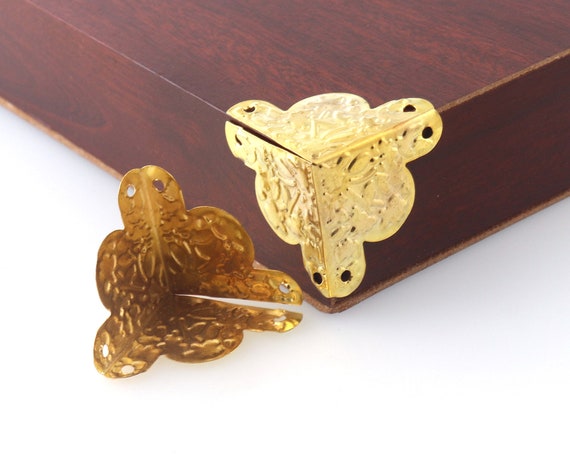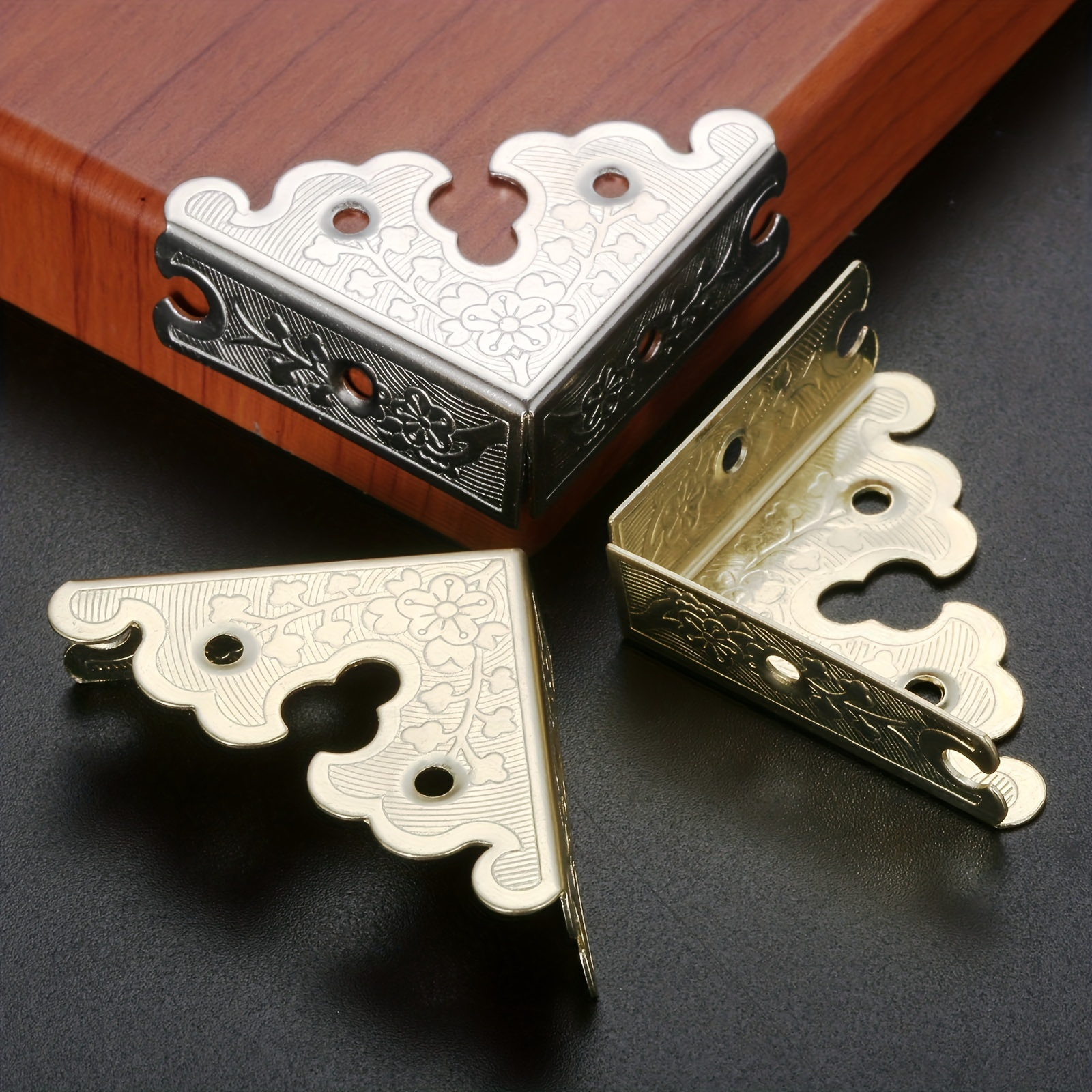As a woodworking enthusiast, I’ve always been on the lookout for ways to elevate my projects, and decorative metal corners for wood have proven to be a game-changer. These functional and aesthetic elements not only protect the edges of wood but also add a stylish touch that can complement any design. In this comprehensive guide, we’ll explore everything from types and styles to installation tips and maintenance, ensuring you have all the information you need to choose the perfect decorative metal corners for your next project.
What Are Decorative Metal Corners?
Decorative metal corners are metal pieces that are attached to the corners of wooden furniture, frames, or structures. They serve both protective and decorative purposes. While they come in various designs, materials, and sizes, their primary function is to guard the corners from wear and tear, impact, and deterioration.
Types of Decorative Metal Corners
When it comes to decorative metal corners, the options are plentiful. Here are some common types:
1. L-Brackets
L-brackets are the most basic form of decorative corners. They are L-shaped and provide significant reinforcement while offering a subtle aesthetic.
2. Corner Braces
Corner braces are larger and designed to be more visible. Available in various designs, they serve as both a decorative and functional enhancement.
3. Decorative Corner Caps
These are usually ornamental pieces that fit snugly around the corner. They often feature intricate designs and are made from various metals, including brass, steel, or wrought iron.
4. Antique and Vintage Styles
If you aim for a vintage look, consider antique-style corner protectors. They add a touch of nostalgia and can perfectly complement rustic or traditional decor.
5. Custom Designs
For those looking to stand out, custom designs can be made to fit specific projects. This option offers endless creativity and personalization.
Materials Used in Decorative Metal Corners
The material used for decorative metal corners significantly impacts durability, appearance, and cost. Here are some common materials:
1. Brass
Brass is a popular choice due to its shiny appearance and resistance to corrosion. It’s great for both indoor and outdoor projects.

2. Stainless Steel
Known for its durability and modern appeal, stainless steel is ideal for contemporary designs. It resists rust and can withstand harsh environments.
3. Wrought Iron
Wrought iron adds a rustic and vintage feel to projects. It’s heavy-duty yet often comes with beautiful designs.

4. Aluminum
Lightweight and resistant to corrosion, aluminum is an excellent option for budget-conscious projects.
Choosing the Right Decorative Metal Corners
Selecting the appropriate decorative metal corners depends on several factors:

1. Project Type
Consider what you’re making. For instance, a coffee table may require sturdier options compared to a photo frame.
2. Aesthetic Appeal
Think about your overall design preference. Do you lean towards modern, vintage, or industrial styles? Your choice of corners should reflect that.

3. Size and Scale
The dimensions of the corners must match the scale of your project. Larger pieces may benefit from more substantial corners, while smaller items require more delicate options.
Installation Tips for Decorative Metal Corners
Installing decorative metal corners is a straightforward process that can enhance your woodworking projects significantly. Here’s how to do it:

1. Gather Your Tools
- Drill or screwdriver
- Screws
- Measuring tape
- Level
- Wood glue (optional)
2. Measure and Mark
Use the measuring tape to find the correct position for your metal corners. Mark the spots for screws if necessary.

3. Pre-Drill Holes
If you’re using screws, pre-drill holes to prevent the wood from splitting. Make sure the holes align perfectly with the corner pieces.
4. Attach the Corners
Position the decorative metal corner and secure it with screws. If you’re using glue, apply it along the edge for added stability, then attach the corner.

5. Level and Adjust
Use a level to ensure the metal corner is straight. Make adjustments as needed before fully tightening the screws.
Maintaining Your Decorative Metal Corners
To keep your metal corners looking their best, consider the following maintenance tips:
1. Regular Cleaning
Dust and grime can accumulate over time. Use a damp cloth and mild detergent to wipe down the corners.
2. Check for Rust
If you notice any signs of rust, treat them immediately with a rust remover suitable for the metal type.
3. Inspect for Loose Screws
Periodically check the screws to ensure they’re tight. Loose screws can lead to instability.
Advantages of Using Decorative Metal Corners
| Advantage | Description |
|---|---|
| Protection | They shield the corners of wood from damage and wear. |
| Aesthetic Appeal | They enhance the overall look of the furniture or project. |
| Diversity | Available in various materials and designs to fit any style. |
| Increased Value | Well-designed corners can boost the perceived value of handmade items. |
Comparing Decorative Metal Corners
When shopping for decorative metal corners, consider comparing styles, materials, and prices. Here’s a quick comparison table:
| Style | Material | Durability | Price Range |
|---|---|---|---|
| Modern | Stainless Steel | High | $5 – $15 |
| Vintage | Brass | Medium | $8 – $20 |
| Rustic | Wrought Iron | High | $10 – $25 |
| Contemporary | Aluminum | Medium | $3 – $12 |
Common FAQs About Decorative Metal Corners
1. Can I use decorative metal corners outdoors?
Yes, but make sure to choose a material that is rust-resistant, such as stainless steel or aluminum.
2. How do I remove decorative metal corners?
To remove, unscrew the corners carefully. If they are glued, use a heat gun to soften the adhesive before prying them off.
3. Are there eco-friendly options for decorative metal corners?
Yes, some manufacturers offer eco-friendly finishes and materials. Look for certifications or ask your supplier.
4. What is the best way to clean brass corners?
Use a mixture of vinegar and baking soda to clean brass without scratching it. Rinse thoroughly and dry after cleaning.
5. Can I paint decorative metal corners?
Yes, you can paint them, but it’s essential to use a primer suitable for metal to ensure better adhesion.
Final Thoughts
Decorative metal corners for wood are practical accessories that can significantly enhance the beauty and durability of your projects. From choosing the right style and material to proper installation and maintenance, this guide equips you with valuable insights to make informed decisions. Embrace creativity and functionality in your woodworking projects — decorative metal corners are a brilliant way to achieve both!